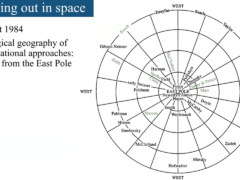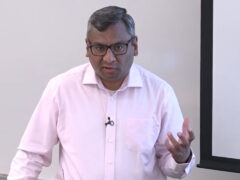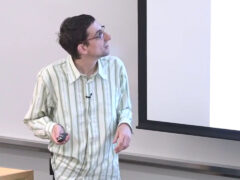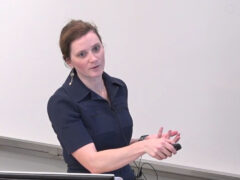Which side chooses in large random matching markets?
We analyze large random two-sided matching markets with different numbers of men and women. We show that being on the short side of the market confers a large advantage, in a sense that the short side roughly chooses the matching while the long side roughly gets chosen. In addition, the matching is roughly the same under all stable matchings. Consider a market with n men and n+k women, for arbitrary 1 = k = n/2. We show that, with high probability, the men’s average rank of wives is less than 5log(n/k) in any stable match. Further, men’s average rank of wives in the women-optimal stable match (WOSM) is within a factor 1+ε of that in the men-optimal stable match (MOSM). On the other hand, the women’s average rank of husbands is at least n/(5 log(n/k)) in all stable matches, and is again very nearly the same in the WOSM and MOSM. Thus, our results imply that the core is likely to be “small”. Simulations show that the same features arise even in small markets.
(Joint work with Itai Ashlagi and Jacob D. Leshno)
Speaker Details
Yash Kanoria is a postdoctoral fellow at Microsoft Research New England. His current research interests include matching markets, graphical models and probability. In Fall 2013, he will join the Decision, Risk and Operations faculty at Columbia Business School.
- Series:
- Microsoft Research Talks
- Date:
- Speakers:
- Yashodhan Kanoria
- Affiliation:
- MSRNE
-
-
Jeff Running
-
Yashodhan Kanoria
-
Series: Microsoft Research Talks
-
-
-
-
Galea: The Bridge Between Mixed Reality and Neurotechnology
Speakers:- Eva Esteban,
- Conor Russomanno
-
Current and Future Application of BCIs
Speakers:- Christoph Guger
-
Challenges in Evolving a Successful Database Product (SQL Server) to a Cloud Service (SQL Azure)
Speakers:- Hanuma Kodavalla,
- Phil Bernstein
-
Improving text prediction accuracy using neurophysiology
Speakers:- Sophia Mehdizadeh
-
-
DIABLo: a Deep Individual-Agnostic Binaural Localizer
Speakers:- Shoken Kaneko
-
-
Recent Efforts Towards Efficient And Scalable Neural Waveform Coding
Speakers:- Kai Zhen
-
-
Audio-based Toxic Language Detection
Speakers:- Midia Yousefi
-
-
From SqueezeNet to SqueezeBERT: Developing Efficient Deep Neural Networks
Speakers:- Sujeeth Bharadwaj
-
Hope Speech and Help Speech: Surfacing Positivity Amidst Hate
Speakers:- Monojit Choudhury
-
-
-
-
-
'F' to 'A' on the N.Y. Regents Science Exams: An Overview of the Aristo Project
Speakers:- Peter Clark
-
Checkpointing the Un-checkpointable: the Split-Process Approach for MPI and Formal Verification
Speakers:- Gene Cooperman
-
Learning Structured Models for Safe Robot Control
Speakers:- Ashish Kapoor
-
-
























